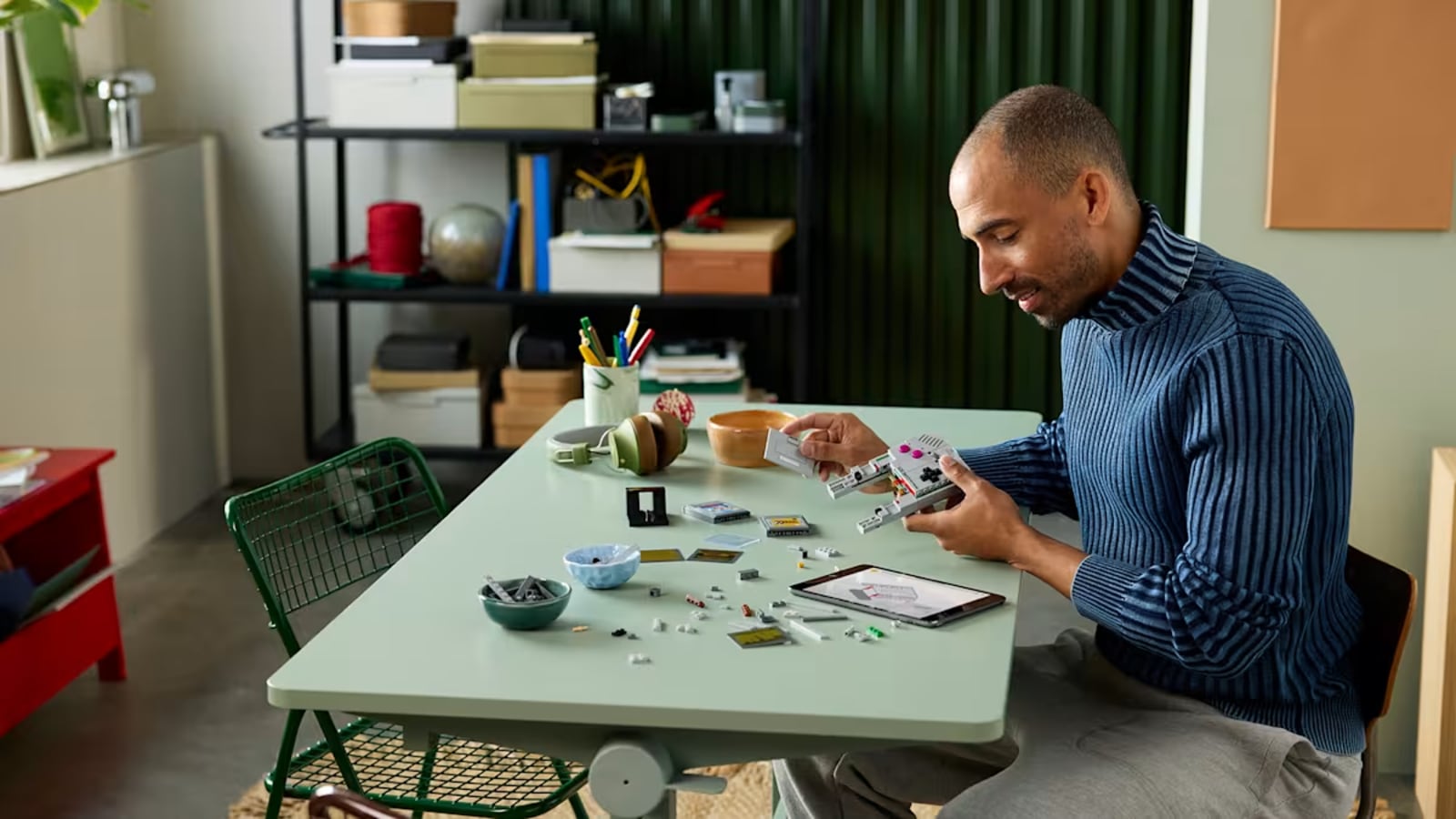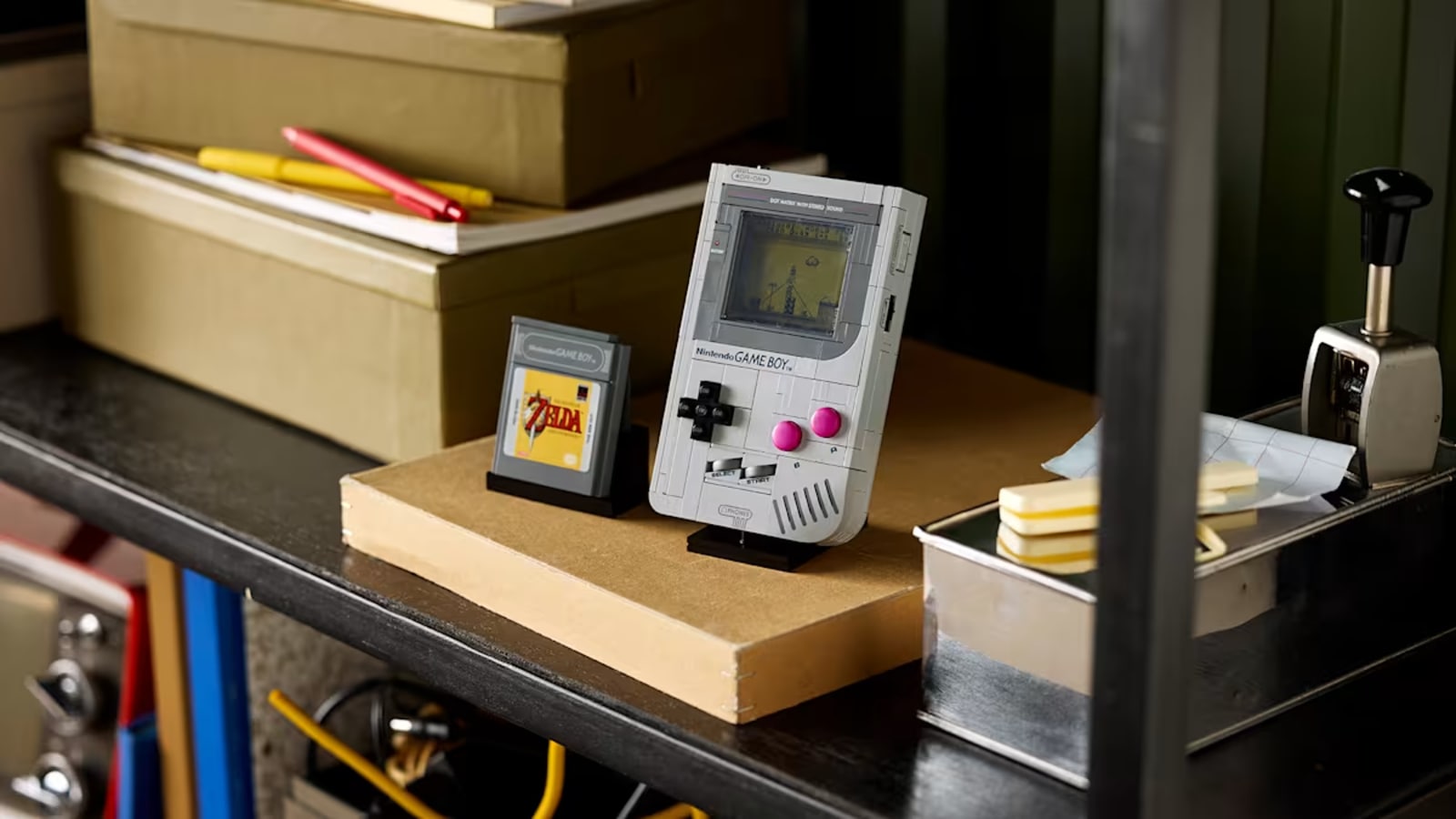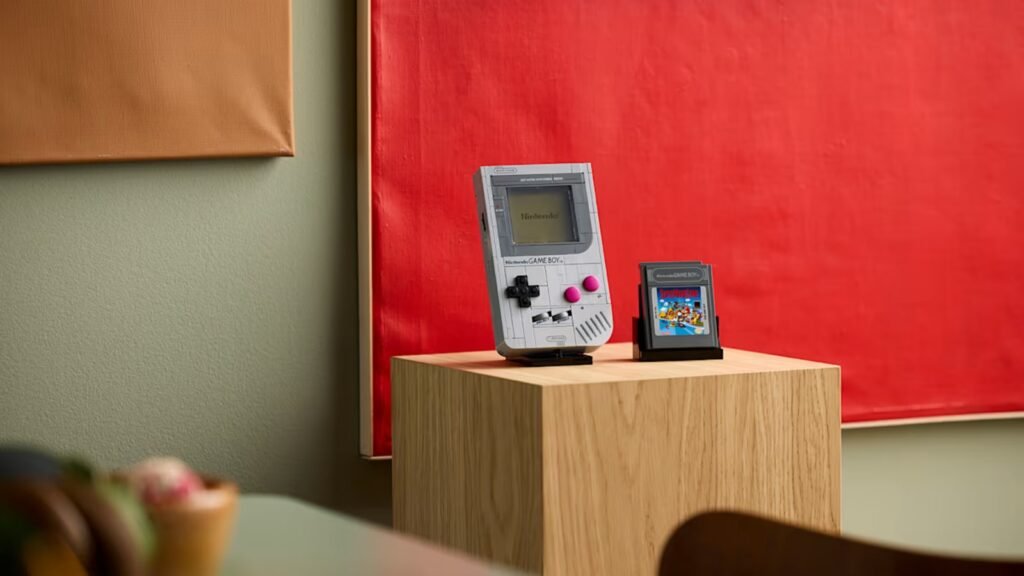The first Game Boy hit the market in 1989 and helped create a market for portable video games. Years later, in 2025, Nintendo is bringing back the iconic Game Boy – this time in the form of a Lego set.
It’s a 421-piece set that, when built, resembles a near 1:1 scale replica of Nintendo’s iconic handheld console. The set includes buildable Game Pak cartridges for Super Mario Land and The Legend of Zelda: Link’s Awakening. It will be released on October 1 for $60 and is available for preorder at the Lego Store in the US.
Game Boy: The history of the Nintendo’s iconic handheld console
The original Game Boy was a game-changing system for Nintendo and the broader gaming industry. It became one of the most successful portable consoles of its time, making it possible for people to play video games on the go. In fact, the Game Boy set the template for every handheld console that followed.
The Lego Game Boy set closely mirrors the original, featuring a D-pad, A and B buttons, and Start and Select buttons. It also includes contrast and volume dials on the sides. You can choose from three display options: a Nintendo start screen or gameplay scenes from the two included games.
 A rising number of adults are buying toys for themselves. (Image credit: Nintendo)
A rising number of adults are buying toys for themselves. (Image credit: Nintendo)
The first system in the Game Boy lineup had a two-inch screen and ran on an 8-bit processor. It looked chunky and came in a think grey coloured body. It used four AA batteries, allowing players to game anywhere. Although its black-and-white graphics weren’t cutting-edge, the console helped establish a market for portable gaming, much like what the Walkman did for portable music players or the iPhone did for smartphones.
Two key reasons for the Game Boy’s success were its durable design and a massive library of games. In the US, Nintendo bundled Tetris with the console, and the game quickly became a sensation, attracting a new wave of consumers to gaming for the first time. Tetris proved to be a massive hit, selling 35 million units alongside the Game Boy. Other early titles that helped make the Game Boy popular included Super Mario Land, Alleyway, Baseball, and Tennis. The original Game Boy sold 1 million units within a few weeks of its release.
Story continues below this ad
 The Lego Game Boy set looks exactly like the original Game Boy. (Image credit: Nintendo)
The Lego Game Boy set looks exactly like the original Game Boy. (Image credit: Nintendo)
While the Game Boy was a surprise hit, Nintendo didn’t expect the device to achieve such massive commercial success. Even today, the Game Boy is instantly recognizable from a distance, much like the iPod. Game Boy has a prominent place at the Smithsonian’s National Museum of American History in Washington, D.C
Developed by a team led by Satoru Okada and Gunpei Yokoi in Kyoto, the Game Boy is one of the finest examples of Yokoi’s philosophy of “lateral thinking with withered technology”—a do-more-with-less design principle that still defines Nintendo’s approach today. It was designed to be simple, intuitive, and easy to use, requiring no training or prior knowledge to operate.
With four buttons and a cross-shaped directional pad, you could start playing a game instantly as soon as you turned it on. Thanks to its greyscale screen, the battery could last for days of play. Its durable design made it sturdy enough to survive in the hands of kids and it would probably still work today.
The Game Boy lineup, which spanned many models, went on to sell over 120 million units. Its success was so monumental that Nintendo capitalized on the portable form factor and effectively created an entirely new category of handheld gaming systems. Without the original Game Boy, there would be no Game Boy Color, Game Boy Advance, Nintendo DS, or even the Switch, all consoles designed to be played in the portable form factor. What made handheld consoles like the Game Boy so popular, and ultimately mainstream, was their exclusive library of games, titles that remained exclusive to Nintendo systems.
Story continues below this ad
The Lego Game Boy kit isn’t Nintendo’s first collaboration with the Lego Group. In the past, the two companies have teamed up to create a Nintendo Entertainment System (NES) kit with a retro television, as well as Legend of Zelda and Super Mario-themed sets. The NES kit included a replica of the console, a game cartridge, a controller, and a TV, adding up to 2,646 bricks and carrying a hefty price tag of around $230.
👊 Now you’re playing with power. Brick Power! #LEGO #LEGOGameBoy Pre-order today: https://t.co/BMnXiPHeyj pic.twitter.com/S0rNgjWWDF
— Nintendo of America (@NintendoAmerica) July 24, 2025
https://platform.twitter.com/widgets.js
The old school charm of Nintendo
Both brands, Nintendo especially, thrive on nostalgia, re-releases, and remakes. The key market here is driven by a demographic shift: the first generation of consumers who were teens during the late ’80s and early ’90s are now entering their mid-thirties and forties. Nintendo understands how to market its products to this audience, with nostalgia playing an important role. Its distinctly Japanese identity, along with Japan’s broader influence on global pop culture, also played a major role in the popularity of Nintendo’s games and consoles in the West, particularly in the US and Europe.
In recent years, Nintendo’s reach has expanded, and its popularity has surged, attracting a new generation of consumers thanks to the success of the Switch and the company’s efforts to diversify its business by entering new markets like theme parks and movies. However, the biggest reason Nintendo remains relevant is that the Kyoto-based company caters to a broad demographic, and its games are still fun to play and consistently maintain high quality.

